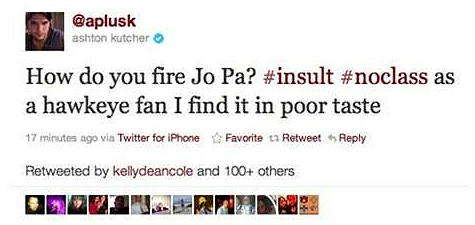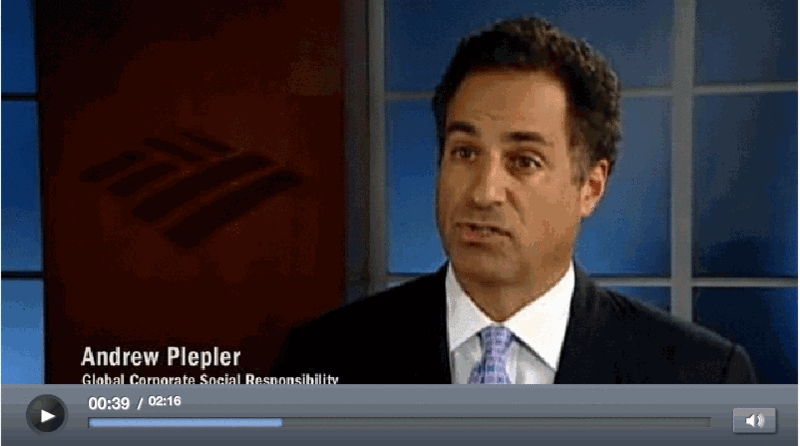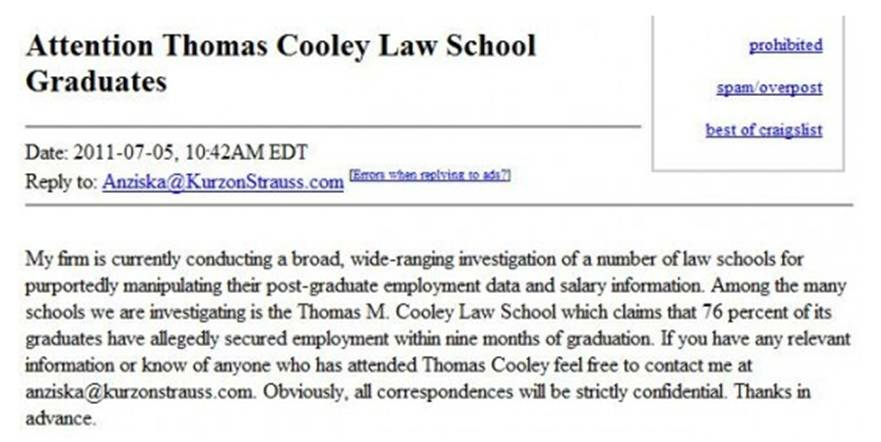Coca-Cola President Argues Against Soda Limit
Last week, New York Mayor Michael Bloomberg proposed limiting sugary drinks to 16 ounces. This change would apply to sodas and other beverages sold in NY restaurants, at movies, and by street vendors.
USA Today interviewed Katie Bayne, Coca-Cola's president of sparkling beverages in North America. Bayne's response to the proposal focused on what people "need"-an interesting argument-and the lack of evidence to support the Mayor's proposal.
Here are excerpts from the interview:
Q: But critics call soft drinks "empty" calories.
A: A calorie is a calorie. What our drinks offer is hydration. That's essential to the human body. We offer great taste and benefits whether it's an uplift or carbohydrates or energy. We don't believe in empty calories. We believe in hydration.
The Mayo Clinic agrees that soda hydrates; however, nutritionists recommend water over soda.
Q: What do you say to those who believe that sugar - particularly in soft drinks - works on the brain like an addictive substance?
A: There is no scientific evidence.
Discussion Starters:
- Do your own research about whether sugar in soft drinks has addictive qualities. What do you find? Does it support or contradict Katie Bayne's response that there's no scientific evidence linking the two?
- Read the entire interview. Overall, how do assess Bayne's responses?
- Part of the Mayor Bloomberg's argument, in the video above, is that the size of drinks has increased. How do you assess this argument? Is this a convincing data point for his decision to cap the size of soft-drinks?
Twitter: Flat Percentage of Users, but Deeper Engagement
New research shows that only 15% of online adults use Twitter, and only 8% use the service every day. Although the percentage of users remains fairly stable and is fairly small, the number of daily users has doubled since May 2011 and quadrupled since late 2010. 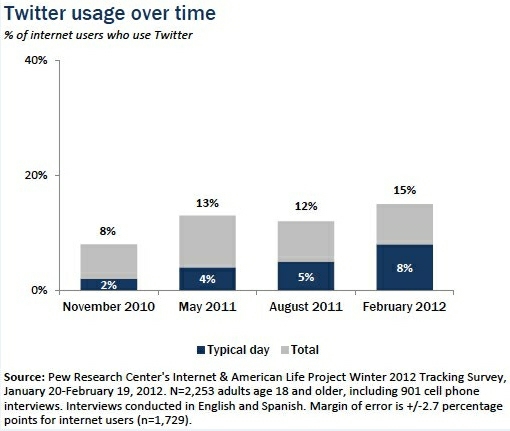
Authors of the February 2012 Pew Research Center's report credit smartphones with the increase in usage. According to Aaron Smith, Pew senior research specialist, "I do think it's notable that typical day Twitter usage is growing even as the overall usage stats have remained fairly consistent, [which] would imply that existing Twitter users are growing more engaged over time, with mobile being a big part of that story."
It took a while, but younger users are getting onboard with Twitter. Between November 2010 and February 2012, the percentage of Internet users between 18 and 24 on Twitter has increased from 16% to 31%. In addition, one in five in this age group uses Twitter.
Discussion Starters:
- Read the Pew report. What other conclusions can you draw from the study?
- What is your own use of Twitter? If you fit within the category of growing users, why has your usage increased?
- How is this new information relevant to corporate communicators?
Apple's Impressive Second-Quarter Results
With strong sales of iPads, iPhones, and Macs, Apple reported a 94% increase in year-over-year sales (compared to second-quarter a year ago).
In a company news release, CEO Tim Cook said, "We're thrilled with sales of over 35 million iPhones and almost 12 million iPads in the March quarter. The new iPad is off to a great start, and across the year you're going to see a lot more of the kind of innovation that only Apple can deliver." The news comes within a month of reports that Tim Cook is the highest paid CEO, raking in $278 million last year.
The news sounds good, but a closer look at the data shows that sales are down from the first quarter (click for the PDF).

Discussion Starters and Assignment Ideas:
- Do you believe that Tim Cook's salary is justified? Why or why not?
- Rewrite Apple's news release for employees. How would you adapt this message to an internal email?
- Imagine that you're presenting the second-quarter results as part of a PowerPoint presentation to shareholders. Convert the table to a few charts to show the results more visually. Which data would you choose to include?
MLA (Bizarre) Standard for Citing Tweets
The Modern Language Association has announced a new standard for citing tweets:
"Begin the entry in the works-cited list with the author's real name and, in parentheses, user name, if both are known and they differ. If only the user name is known, give it alone.
"Next provide the entire text of the tweet in quotation marks, without changing the capitalization. Conclude the entry with the date and time of the message and the medium of publication (Tweet).
The word "Tweet" is rather strange to me; we don't include the words "book" or "journal" in other citations. Rather, the source is Twitter. I might also include a date when the tweet was accessed for the same reason we do so for other web content: the tweet may be deleted.
The Verge compares MLA's approach to APA's, identified two years ago:
MLA:

As The Verge writer points out, the MLA version is more helpful because it includes the real name and Twitter handle, but the APA version helps readers find the actual tweet by including a link.
The Harvard Business School Citation Guide 2012, my preferred source for business writing, doesn't include tweets at all. I imagine the theory is that tweets are considered fair use and therefore, as long as the source is clear within the text, citation is unnecessary. Or, the HBS needs updating.
Discussion Starters:
- Do you prefer the APA or MLA citation standard? Why?
- What's your view of not citing tweets for business writing?
"Strictly Confidential" Memo About Greece's Debt Is Leaked
As a new restructuring plan and bailout package for Greece are announced today, a memo about the plans marked "Strictly Confidential" was leaked.
Based on the memo, Slate describes the situation as follows:
"Greece can't pay its bills. But even if Greece was relieved from the obligation to service its outstanding stock of debt, it still couldn't pay its remaining expenses. It can't devalue to try to boost its tourist sector. Instead, the rest of the Eurozone is heading into recession which hurts Greece's main shot at export earnings. Draconian as the austerity that Germany, the Netherlands, and Finland are insisting on as a condition of their charity accepting the charity is the only way to avoid an even more draconian round of austerity. This austerity will, however, only further crush the Greek economy and make it less likely that debts will be paid."
For instructors and students of communication, the memo is interesting to analyze in terms of business writing principles: audience analysis, content, visuals, organization, writing style, and editing.
Discussion Starters:
- Audience analysis: Who is the original, intended audience? How did the leak affect how the memo was interpreted?
- Content: Are the main points clear? What evidence is provided to support the major arguments?
- Visuals: How are charts used to support the main points? Are they clear and easy to understand?
- Organization: How is the memo organized, and is this effective? How is skim-value achieved?
- Writing Style: How do you assess the writing style? Is it clear and concise? How could it be improved?
- Editing: How are the attention to detail and writing mechanics?
Facebook IPO Letter and Other Communications
As analysts value Facebook in anticipation of the initial public offering, let's look at some of the company's internal and external communications. One interesting message is a poster, distributed around Facebook's offices to keep the employees focused during the IPO. This photo is of Mark Zuckerberg's desk, which he posted on Facebook (and more than 71,000 people found worthy of "liking").
 Zuckerberg's letter to potential investors describes the vision, mission, and priorities of the company. Mashable compiled ten "standout quotes" including the following:
Zuckerberg's letter to potential investors describes the vision, mission, and priorities of the company. Mashable compiled ten "standout quotes" including the following:
- "At Facebook, we're inspired by technologies that have revolutionized how people spread and consume information. We often talk about inventions like the printing press and the television - by simply making communication more efficient, they led to a complete transformation of many important parts of society. They gave more people a voice. They encouraged progress. They changed the way society was organized. They brought us closer together."
- "Simply put: we don't build services to make money; we make money to build better services."
Quotes such as the last, according to Mashable, make Facebook "sound like it's set out to deliver presents and free education to underprivileged children."
James Pennebaker, psychology department chair at the University of Texas, analyzed Zuckerberg's letter and compared it to other CEOs' IPO letters. According to Pennebaker, the letter revealed the following about Zuckerberg, reported by Forbes:
"Zuckerberg's word use 'suggests someone who is driven by very high rates of need for achievement' but low rates for building wealth or social affiliation, Pennebaker concludes. 'Most of the Zuckerberg letter is emotionally distant,' the researcher adds. 'There are very few personal pronouns (which typically signal an emotional cognition to other humans) and virtually no I-words except for a couple of paragraphs in the middle of the letter.' Emotive words such as 'happy' or 'sad' are rare, too."
Pennebaker also found, "The author is very much in the here-and-now, as opposed to deep analysis of the past or even directions for the future."
Discussion Starters:
EPA Report Links Water Contamination to Hydrofracking
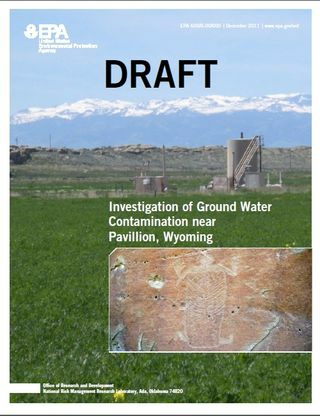 The Environmental Protection Agency has published a "bombshell" report identifying hydraulic fracturing as the likely cause of water pollution in central Wyoming. The report adds fuel to the growing controversy about "hydrofracking"-the process of gas drilling that involves injecting large amounts of water, sand, and hundreds of chemicals into shale rock.
The Environmental Protection Agency has published a "bombshell" report identifying hydraulic fracturing as the likely cause of water pollution in central Wyoming. The report adds fuel to the growing controversy about "hydrofracking"-the process of gas drilling that involves injecting large amounts of water, sand, and hundreds of chemicals into shale rock.
The EPA's findings come shortly after a November report that fracking caused two minor earthquakes.
Discussion Starters:
- Review the EPA report. What principles of report writing does the draft follow?
- How is the report organized? Do you find this organization effective? Why or why not?
- How could the report be improved for easier reading?
- Research the fracking issue further. Based on your findings, what is the significance of this report?
Hasty Tweet Damages Ashton Kutcher's Following
How about reading a little before jumping to conclusions? This is the lesson learned by Ashton Kutcher, who tweeted to his more than 8 million followers about the firing of Penn State Coach Joe Paterno:
Kutcher explains his response:
"Last night after returning home from work, I walked by the television and simply saw a headline that Joe Paterno had been fired. Having no more information than that, I assumed that he had been fired due to poor performance as an aging coach."
He has since hired PR firm Katalyst to manage his Twitter feed, Kutcher says, "as a secondary editorial measure, to ensure the quality of its content." Sounds like a good idea.
Discussion Starters:
- Should we expect more of someone with 8 million followers, or is it simply the nature of the medium (Twitter) that causes such misreports?
- What are the potential consequences of Kutcher hiring a firm to manage his popular Twitter feed?
What Does 7 Billion Look Like?
It's hard to imagine such a large number (unless you're Warren Buffett), but the world population will soon be 7 billion strong. What are some ways that we can visualize this number? This CNN video tries to help us, just as Zephyr Teachout helped us make sense of the $700 billion doled out in government funding during the financial crisis in 2008.
Discussion Starters:
- Which of the comparisons in the CNN video help you to visualize 7 billion most easily?
- What are other ways that you can help people visualize 7 billion? Imagine that you're translating this number for 5th graders, college students, and senior citizens. What comparisons might work best for each group?
Bank of America Tries to Repair Its Image
As the target of some "Occupy Wall Street" demonstrations, Bank of America is fighting back. The company's image has suffered in part because of many foreclosed homes (and "robo-signers"), a recent announcement of $5 monthly fees for debit cards, 30,000 layoffs, and a poorly timed website outage. Now Bank of America is running ads in major cities to focus on its good work: charitable donations, small business loans, and loan modifications to help homeowners prevent foreclosure.
Bank spokesperson T.J. Crawford explains, "The campaign aims to deliver the facts about Bank of America's local impact. Sharing the significant work we do at the local level and critical role we play is more important than ever." An ad that ran in Charlotte, NC, the bank's headquarters, had the tagline, "We're working to help keep the North Carolina economy moving forward."
In July 2011, Bank of America published its first Corporate Responsibility Report. On its website, the bank reaffirms its "commitment to shareholders, customers, and clients." In a video on the site, the company gives several examples of how it has served local communities.
Discussion Starters and Assignment Ideas:
- The "Executive Summary" of Bank of America's Corporate Social Responsibility report is 16 pages (download). How does this differ from a typical executive summary? Why do you believe Bank of America took this approach?
- Convert the executive summary to a more typical one-page executive summary. What is most important to include, and how can you present this information? For variety, write two versions: one as paragraph text and another in presentation software format (e.g., PowerPoint).
- How do you assess Bank of America's messages? Do you buy its image as a socially responsible company? Which messages in the CSR video do you find most and least convincing?
Reebok Pays $25 Million Because of Deceptive Ads
As it turns out, you can't get toned just by wearing a pair of shoes. Reebok is paying big refunds because claims about their RunTone and EasyTone shoes cannot be substantiated. The company marketed these products on claims such as "You can work your hamstrings and calves up to 11% harder." Lacking evidence to prove these results, Reebok was fined $25 million by the Federal Trade Commission. Customers may apply for a refund via the FTC website.
Although Reebok agreed to the settlement, the company stands by its products and will continue selling the shoes. In a statement, Reebok affirms,
"We have received overwhelmingly enthusiastic feedback from thousands of EasyTone customers, and we remain committed to the continued development of our EasyTone line of products."
Discussion Starters:
- How did Reebok fall short in its claims? What questions would you have after hearing the data about the shoes?
- Do you consider Reebok's advertising to be deceptive? Why or why or not?
AP Issues Situational Style Guide for 9/11 Anniversary
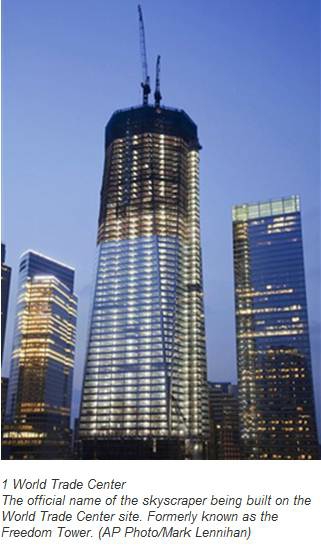 Associated Press is known for its style guide to help journalists decide between "smart phone" and "smartphone," but now the organization has created something new: a so-called "situational stylebook" in preparation for the 10th anniversary of the 9/11 attacks. The Sept. 11 Style and Reference Guide may ensure that journalists writing about the events conform to certain standards, for example, "twin towers" (lowercase) and al-Qaida (pronounced al-KY'-ee-duh).
Associated Press is known for its style guide to help journalists decide between "smart phone" and "smartphone," but now the organization has created something new: a so-called "situational stylebook" in preparation for the 10th anniversary of the 9/11 attacks. The Sept. 11 Style and Reference Guide may ensure that journalists writing about the events conform to certain standards, for example, "twin towers" (lowercase) and al-Qaida (pronounced al-KY'-ee-duh).
In addition to promoting consistency in writing style, the guide will help journalists accurately report about 9/11-related events. The guide includes common sense advice such as this:
"Do not make up names, however. There is no Boston Airport, for example. The Boston airport (lowercase airport) would be acceptable if for some reason the proper name, Logan International Airport, were not used."
The guide's timeline of events is also helpful; after all, it has been a decade since the events, and memories fade.
Discussion Starters:
- Looking at the AP Sept. 11 Style and Reference Guide, which advice do you think will be most important for people reporting about the 9/11 anniversary?
- Does any of the advice surprise you? Why?
- For what other situations or events do you think a situational style guide might be useful?
Law Students Put Their Education to Work and Sue Their Schools
Law school graduates are seeking class-action status in a suit against their alma maters Thomas Cooley Law School and New York Law School. The plaintiffs claim the schools defraud applicants by overstating job placement rates. Apparently, included in some schools' employment rates are people in part-time jobs, temporary jobs, jobs that don't require a J.D., and fellowships sponsored by the school. The plaintiffs are seeking tuition refunds and changes in how employment numbers are reported.
To defend its data, Cooley issued a report (download) claiming, "Study Shows Lawyers Have One of the Highest Employment Rates of All Professional Occupations." Cooley has also responded with a lawsuit of its own against the plaintiffs' attorneys claiming defamation because of ads such as this:
- Read more about the debate over statistics here. How do you assess the law schools' communication to students? Based on this information, do the plaintiffs have a case?
- Read the employment report issued by Cooley. What parts of the report do you find most and least convincing?
- After reading the Cooley report, are you more or less sympathetic to the plaintiffs? In other words, how effective is the report in making the school's argument about employment?
- Beyond the legal questions, and based on what you know from reading, do you believe these law schools are communicating ethically to applicants? Why or why not?
Strike at Verizon: A Look at the Data
Verizon is asking for concessions from the Communications Workers of America (CWA), and so far, management isn't getting any. The company claims that poor performance in its landline division makes costs unsustainable, but the unionized employees don't agree. To change the cost structure, Verizon wants to implement a pension freeze, reduce the number of sick days, and raise employee contributions to health care insurance.
Verizon CEO Lowell McAdam sent a letter (download) to all employees explaining the company's position.
In its statement, CWA says that Verizon's initial list of concessions hasn't budged since June 22, when union bargaining started. 45,000 employees are now on strike and cite the following "Verizon Financials" to support their case:
- 2011 annualized revenues are $108 billion and annualized net profits are $6 billion.
- Verizon Wireless just paid its parent company and Vodaphone a $10 billion dividend.
- Verizon's top five executives received compensation of $258 million over the past four years.
According to a New York Times article, management and the union disagree about benefits payouts to employees:
Union officials dispute the company's estimate that each employee receives $50,000 worth of benefits each year. In that number, the company includes $14,700 for medical and dental insurance, $10,900 for retiree health care and life insurance, $10,800 for pension and $7,500 for time off.
Union officials say total benefits average $25,000 a year. Mr. Kohl, the union official, disputed the $10,800 yearly figure for pensions, noting that Verizon's annual report said the company's 2010 contributions to the union's defined benefit plans "were not significant." Verizon officials said the $10,800 was an average annual amount.
Mr. Kohl also said the $10,900 retiree health care figure was greatly exaggerated, asserting that many retirees had worked years to pay for that care so the cost should not be attributed to current employees.
Mr. Kohl also quarreled with Verizon saying the value of time off - vacation, sick days and personal days - was $7,500. He dismissed that as double-counting because that number was already counted in wages.
Discussion Starters:
- Looking at the argument over employee benefits, whose version of the data do you accept?
- How convincing do you find the union's list of "Verizon Financials"? Do these numbers influence your thinking about whether the union should make concessions?
- The CWA refers to Verizon's annual report to defend its position that pensions should not be frozen. How do you interpret the note "were not significant" in the report? Is this a convincing argument?
- In CEO Lowell's letter to employees, what is his strongest argument? What is his weakest?
- What ethical issues do you see in this dispute? Do you side more with management or the employees in this case? Why?
Following Complaint Letter, No "Mystery Shopper" Study of Doctors
The Obama Administration had planned a survey to test how difficult it is for Medicaid and Medicare patients to get appointments with doctors. But following criticism about the cost of the study and the "proposed clandestine method of collecting information from physician offices," the study has been canceled.
For data collection, the study called for mystery shoppers, who would pose as patients. In a letter, Senator Mark Kirk emphasized the "stealth" nature of the plan and his belief that the purpose of the study -- to prove a shortage of doctors -- has already been documented.
Watch a related video: President Obama's discussion of Medicare.
Discussion Starters:
- What research was the Obama Administration trying to gather that they believed could only be obtained through mystery shoppers? In other words, what was the value of using mystery shoppers for this study?
- From reading Senator Kirk's letter, do you consider the original study with mystery shoppers to be ethical for this purpose? Why or why not?
Will Graphic Images Encourage People to Quit Smoking?
The U.S. government is using more visuals to help people get healthier. Shortly after revising the food pyramid, federal health officials have selected nine graphic images to appear on cigarette packs. If you're strong, you can see all of the new images here. As we might expect, the major tobacco companies are disputing the images, claiming, among other issues, infringement of their right to free speech. Read the government's news release.
Discussion Starters:
- Which, if any, of the images might convince someone to quit smoking? Do you find some images more effective than others? Why?
- Why do you think the government is using pathos (emotional appeals) in this campaign rather than logical arguments, for example, providing data about life expectancy?
- The Truth campaign has used graphic videos to encourage young people not to start or to quit smoking. How effective do you find this video, for example?
"Facebook Fatigue" or a Poor Source of Data?
One report indicates that Facebook lost millions of users in May: 6 million Americans, 1.5 million Canadians, and 100,000 Britons. Of course, Facebook still enjoys great success with almost 700 million users worldwide, but the company's goal is to reach 1 billion, and this is a step in the wrong direction.
While critics say that people are tiring of the social networking service and have increasing concerns about privacy, Facebook has responded with optimism. The company has questioned the data (apparently pulled from the reach of Facebook ads) and maintains that it is "very pleased" with its overall growth, claiming that "50 percent of active users log on to Facebook on any given day."
Discussion Starters:
- Do you buy Facebook's argument about the data source? Why or why not?
- What is your personal view of Facebook? Have you ever felt "Facebook fatigue" or known others to quit?
USDA Replaces Food Pyramid Graphic
The U.S. Department of Agriculture is trying a new graphic to help people understand healthy food choices. The pyramid graphic was thought to be confusing (well, yes, we see a person climbing a mountain with a pile of food at the bottom). The USDA's revised graphic is much simpler, showing just a plate with words to represent portions of food. To accompany the new communication, the USDA has a new website.
- In what ways is the new graphic more effective than the old? How do you think people will react to the image?
- Read the USDA's summary of messages about nutrition. How effective do you find this summary for combating obesity? What ideas do you have for improving these messages?
Low-Salt Diet Study Stirs Up Debate
The Story
Contradicting previous research, a new study found that consuming less salt increased the likelihood that people die of heart disease. The study drew criticism from the Centers for Disease Control and Prevention, with one official saying, "At the moment, this study should be taken with a grain of salt." Ha.
Discussion Starters
- According to critics, the study was flawed, partly because of the small sample size and relatively young subjects, who, at an average age of 40, "did not have high blood pressure or cardiovascular disease." In what ways do you see these issues affecting study results?
- If you were a doctor, would you change your previous advice to patients and now encourage them to stop their low-salt diet? Why or why not? If not, what else would convince you that people should change their diet?
Assignment Ideas
- Working independently, find the study, published in the Journal of the American Medical Association on May 4, 2011, through your school library. In class, be prepared to discuss your search process: what tools did you use to find the article? As a group, discuss the search approaches that proved to be most successful.
- Read the full study. Identify what, if any, caveats the authors provide to temper their conclusions.
- Write a letter to the authors of the study to describe criteria for identifying subjects for primary research. What recommendations do you have for their future research?
Department of Homeland Security Scraps Beloved Five-Color Terror Alerts
The Story
The federal government is finally scrapping its five-level, color-coded terror alert system in favor of a simpler, friendlier approach. The previous system, often mocked, as in the example below, will be replaced by a National Terrorist Advisory System. Through the new system, "alerts will include a clear statement that there is an 'imminent threat' or 'elevated threat'" and will be communicated through the Department of Homeland Security website and through social channels, such as the DHS Facebook page and Twitter. (The Twitter page had no tweets as of this writing, which, I suppose, is a good thing.) Mocking continues, for example, in the PC World article, "Tweet if you see Osama." This article refers to a 2009 April Fools' joke at Info World, which said that the Federal Emergency Management Agency (FEMA) would start allowing people to report emergencies through Twitter. Although not quite the same as this announcement of reports from the government on Twitter, the article is close enough to be funny.
Discussion Starters
- What has been your view of the previous five-color system? How does this system compare to other visual approaches, such as those discussed in Chapter 9 of the book?
- In what ways is the new system an improvement?
- Assess the government's use of social networks, such as Facebook and Twitter. Would you visit the new sites to find emergency information? Why or why not?
Assignment Ideas
- Write a report assessing the successes and failures of the previous five-color system. Read about the original intent of the previous system here. Also research articles about the system to get a comprehensive perspective of what has worked and what hasn't. In your report, recommend a new approach for the Department of Homeland Security, which may include the new plan as well as other ideas you have for communicating important information about threats.
- Imagine that you work for the Department of Homeland Security and have identified a threat: a potential terrorist attack in your hometown. Write a tweet (140 characters or less) to convey the threat to the public. You can invent whatever details about the situation you would like. Just be sure to balance seriousness with reassurance -- you certainly don't want people to panic unnecessarily.







